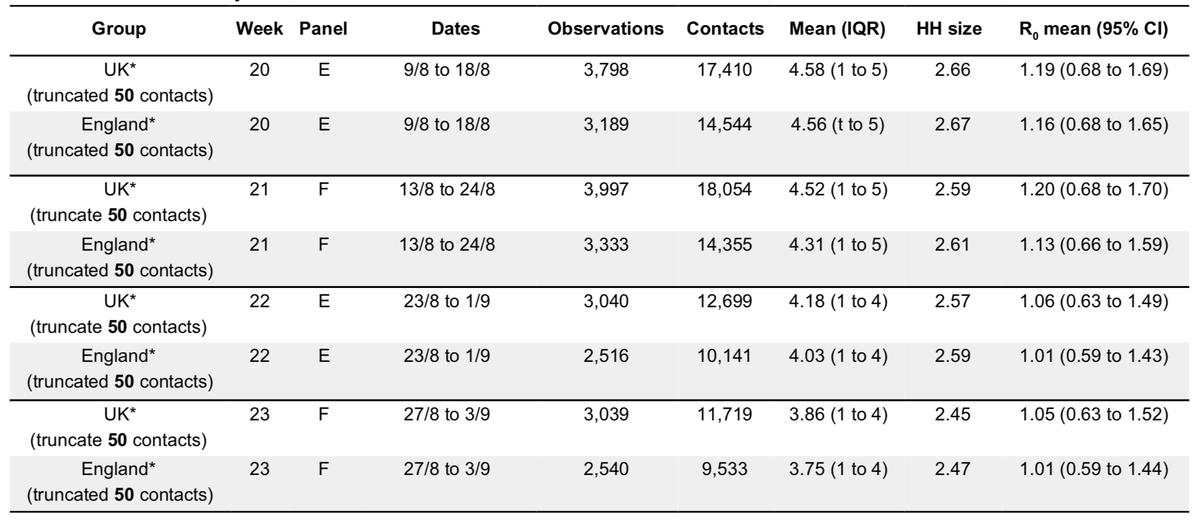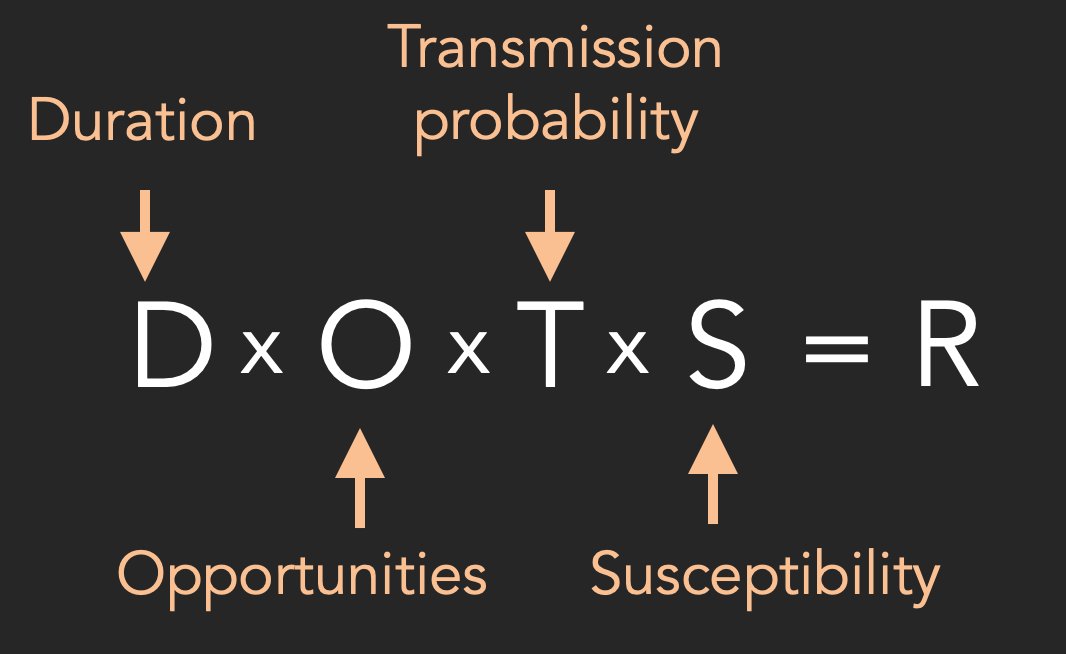There are two main ways to estimate the reproduction number for SARS-CoV-2, and I& #39;d like to discuss the one that doesn& #39;t get so much attention... 1/
Most reported R values use a & #39;top-down& #39; method, which estimates R from the growth pattern in various surveillance datasets (e.g. https://twitter.com/AdamJKucharski/status/1259441472790724610?s=20),">https://twitter.com/AdamJKuch... but there is also a & #39;bottom-up& #39; method, which my @cmmid_lshtm colleagues have been using to track R... 2/
The basic idea is that R depends on four components: duration of infectiousness; opportunities for transmission (i.e. contacts); transmission probability during each opportunity; and population susceptibility... 3/
For respiratory infections that spread through face-to-face interactions, we can measure social contacts via surveys, and hence estimate how changes in & #39;opportunities& #39; scale R. If average opportunities decline by a certain amount, so should the corresponding value of R. 4/
This is what my colleagues have tracked since March. After control measures were introduced, they estimated R declined to ~0.6 based on changes in conversational contacts. Soon after, this R<1 conclusion emerged in & #39;top-down& #39; analysis of case data too. 5/ https://twitter.com/AdamJKucharski/status/1245248025146134530?s=20">https://twitter.com/AdamJKuch...
Towards the end of the summer, contacts started increasing and so did corresponding estimates of R - again, this increase has also been reflected in observed surveillance data. 6/
This approach is useful because it gives us clues about *why* R is changing, rather than just estimating by how much based on patterns in case data. It can also help us understand which contact patterns - and in which groups - are likely driving transmission 7/
Of course, ideally we& #39;d eventually see a decoupling between social contacts and transmission, with reduction coming from testing & tracing (i.e. reducing effective infectious duration) or vaccine-induced immunity (reducing susceptibility), while allowing more interactions. 8/8

 Read on Twitter
Read on Twitter





